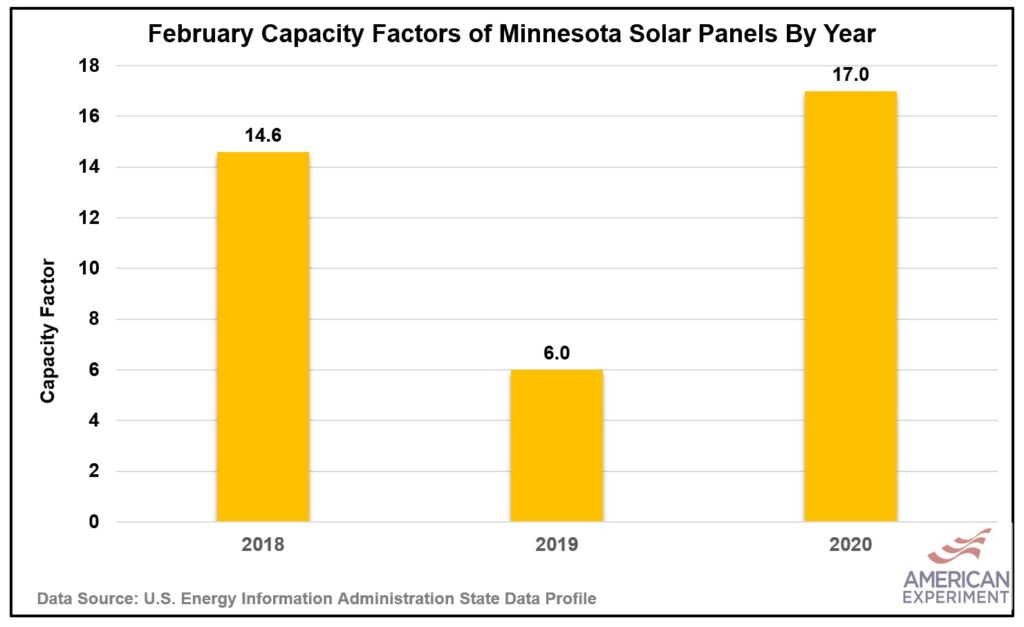Why Minnesota solar panels don’t work well in winter
Minnesota electricity companies like Xcel Energy are planning to spend billions of ratepayer dollars on solar panels, but there is a problem. Solar panels don’t work well in winter.
Solar slumps in winter
Data from the U.S. Energy Information Administration (EIA) show that production from solar panels plummets in the winter. The graph below shows the percentage of electricity generated by solar panels in Minnesota compared to their potential output. This percentage is called a capacity factor in electricity-industry lingo.

Minnesota solar panels are most productive in June and July, when they produce almost 30 percent of their potential output. Unsurprisingly, solar panels produce far less energy in November, December, and January, where production capacity factors are seldom above 10 percent.
Why does productivity drop?
The most obvious reason solar panels are more productive in summer than winter is that the days are longer. On the longest summer days, Minnesota sees more than 15 hours of daylight. On the shortest days of winter, Minnesota only experiences about 9 hours of daylight.
Another reason for falling productivity in winter is snow cover. Even a thin layer of snow on panels can lead to significant reductions in electricity generation from solar panels, and as Ralph Jacobson, the founder of IPS Solar, has said in the past, it is too expensive to pay someone to clear snow off the panels.
We can see the impact of snowfall on electricity generation in the graph below. In February of 2018, solar panels produced 14.6 percent of their potential output, and in 2020, they generated 17 percent. However, in 2019, solar facilities produced just 6 percent of their potential output, because that year had one of the snowiest Februarys on record.

Reduced solar output in February of 2019 shows there are potentially huge variations in year-over-year generation from electricity sources that rely upon the weather, underscoring why these sources are less reliable than nuclear, coal, or natural gas power plants.
Rather than building an electric grid that operates at the mercy of the weather, we should be building one that works reliably and affordably in spite of it.